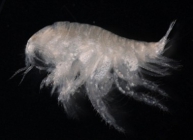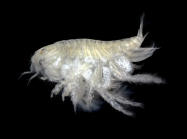Scheldt species taxon details
Urothoe brevicornis Spence Bate & Westwood, 1862
103226 (urn:lsid:marinespecies.org:taxname:103226)
accepted
Species
marine, brackish, fresh, terrestrial
recent only
Bate, C. S. & J. O. Westwood. (1861-1863). A History of the British Sessile-eyed Crustacea. Vol. 1. <em>John Van Voorst, London.</em> 507 pp., available online at https://www.biodiversitylibrary.org/bibliography/1936#/summary
page(s): 198 [details]
page(s): 198 [details]
Horton, T.; Lowry, J.; De Broyer, C.; Bellan-Santini, D.; Copilas-Ciocianu, D.; Corbari, L.; Costello, M.J.; Daneliya, M.; Dauvin, J.-C.; Fišer, C.; Gasca, R.; Grabowski, M.; Guerra-García, J.M.; Hendrycks, E.; Hughes, L.; Jaume, D.; Jazdzewski, K.; Kim, Y.-H.; King, R.; Krapp-Schickel, T.; LeCroy, S.; Lörz, A.-N.; Mamos, T.; Senna, A.R.; Serejo, C.; Souza-Filho, J.F.; Tandberg, A.H.; Thomas, J.D.; Thurston, M.; Vader, W.; Väinölä, R.; Valls Domedel, G.; Vonk, R.; White, K.; Zeidler, W. (2025). World Amphipoda Database. Urothoe brevicornis Spence Bate & Westwood, 1862. Accessed through: VLIZ Consortium Scheldt Species Register at: https://www.scheldemonitor.nl/speciesregister/aphia.php?p=taxdetails&id=103226 on 2025-09-11
VLIZ Consortium. Scheldt Species Register. Urothoe brevicornis Spence Bate & Westwood, 1862. Accessed at: https://scheldemonitor.be/speciesregister/aphia.php?p=taxdetails&id=103226 on 2025-09-11
Date
action
by
original description
Bate, C. S. & J. O. Westwood. (1861-1863). A History of the British Sessile-eyed Crustacea. Vol. 1. <em>John Van Voorst, London.</em> 507 pp., available online at https://www.biodiversitylibrary.org/bibliography/1936#/summary
page(s): 198 [details]
context source (Schelde) Maris, T., O. Beauchard, S. Van Damme, E. Van den Bergh, S. Wijnhoven & P. Meire. (2013). Referentiematrices en Ecotoopoppervlaktes Annex bij de Evaluatiemethodiek Schelde-estuarium Studie naar “Ecotoopoppervlaktes en intactness index”. [Reference matrices and Ecotope areas Annex to the Evaluation methodology Scheldt estuary Study on “Ecotope areas and intactness index”. <em>Monitor Taskforce Publication Series, 2013-01. NIOZ: Yerseke.</em> 35 pp. (look up in IMIS) [details]
context source (BeRMS 2020) Bio-environmental research group; Institute of Agricultural and Fisheries research (ILVO), Belgium; (2016): Macrobenthos monitoring in function of dredge disposal monitoring in the Belgian part of the North Sea. [details]
basis of record Bellan-Santini, D.; Costello, M.J. (2001). Amphipoda. <em>in: Costello, M.J. et al. (Ed.) (2001). European register of marine species: a check-list of the marine species in Europe and a bibliography of guides to their identification.</em> Collection Patrimoines Naturels 50: pp. 295-308. (look up in IMIS) [details]
additional source Bate, C. S. (1863). Catalogue of the Specimens of Amphipodous Crustacea in the Collection of the British Museum. <em>British Museum Natural History: London.</em> i-iv + 1-399, pls. 1-58., available online at https://doi.org/10.5962/bhl.title.20901
page(s): 116 [details]
additional source Bachelet, G.; Dauvin, J.-C.; Sorbe, J. C. (2003). An updated checklist of marine and brackish water Amphipoda (Crustacea: Peracarida) of the southern Bay of Biscay (NE Atlantic). <em>Cah. Biol. Mar.</em> 44(2): 121-151. (look up in IMIS) [details] Available for editors
additional source Muller, Y. (2004). Faune et flore du littoral du Nord, du Pas-de-Calais et de la Belgique: inventaire. [Coastal fauna and flora of the Nord, Pas-de-Calais and Belgium: inventory]. <em>Commission Régionale de Biologie Région Nord Pas-de-Calais: France.</em> 307 pp., available online at http://www.vliz.be/imisdocs/publications/145561.pdf [details]
additional source Lincoln, R. J. (1979). British marine Amphipoda: Gammaridea. <em>British Museum (Natural History).</em> 658 pp. (look up in IMIS) [details] Available for editors
page(s): 198 [details]
context source (Schelde) Maris, T., O. Beauchard, S. Van Damme, E. Van den Bergh, S. Wijnhoven & P. Meire. (2013). Referentiematrices en Ecotoopoppervlaktes Annex bij de Evaluatiemethodiek Schelde-estuarium Studie naar “Ecotoopoppervlaktes en intactness index”. [Reference matrices and Ecotope areas Annex to the Evaluation methodology Scheldt estuary Study on “Ecotope areas and intactness index”. <em>Monitor Taskforce Publication Series, 2013-01. NIOZ: Yerseke.</em> 35 pp. (look up in IMIS) [details]
context source (BeRMS 2020) Bio-environmental research group; Institute of Agricultural and Fisheries research (ILVO), Belgium; (2016): Macrobenthos monitoring in function of dredge disposal monitoring in the Belgian part of the North Sea. [details]
basis of record Bellan-Santini, D.; Costello, M.J. (2001). Amphipoda. <em>in: Costello, M.J. et al. (Ed.) (2001). European register of marine species: a check-list of the marine species in Europe and a bibliography of guides to their identification.</em> Collection Patrimoines Naturels 50: pp. 295-308. (look up in IMIS) [details]
additional source Bate, C. S. (1863). Catalogue of the Specimens of Amphipodous Crustacea in the Collection of the British Museum. <em>British Museum Natural History: London.</em> i-iv + 1-399, pls. 1-58., available online at https://doi.org/10.5962/bhl.title.20901
page(s): 116 [details]
additional source Bachelet, G.; Dauvin, J.-C.; Sorbe, J. C. (2003). An updated checklist of marine and brackish water Amphipoda (Crustacea: Peracarida) of the southern Bay of Biscay (NE Atlantic). <em>Cah. Biol. Mar.</em> 44(2): 121-151. (look up in IMIS) [details] Available for editors
additional source Muller, Y. (2004). Faune et flore du littoral du Nord, du Pas-de-Calais et de la Belgique: inventaire. [Coastal fauna and flora of the Nord, Pas-de-Calais and Belgium: inventory]. <em>Commission Régionale de Biologie Région Nord Pas-de-Calais: France.</em> 307 pp., available online at http://www.vliz.be/imisdocs/publications/145561.pdf [details]
additional source Lincoln, R. J. (1979). British marine Amphipoda: Gammaridea. <em>British Museum (Natural History).</em> 658 pp. (look up in IMIS) [details] Available for editors
 Present
Present  Inaccurate
Inaccurate  Introduced: alien
Introduced: alien  Containing type locality
Containing type locality
| Language | Name | |
|---|---|---|
| Dutch | bulldozerkreeftje | [details] |

